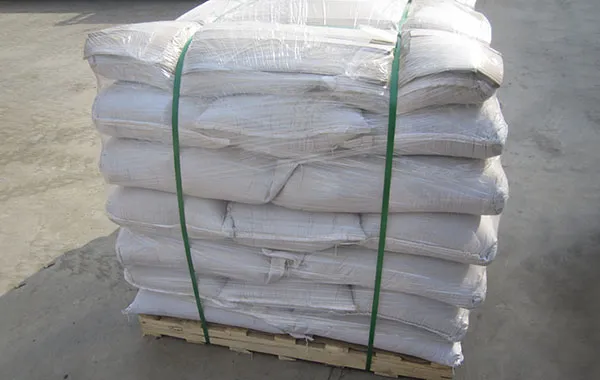mica where is it found

When it comes to the exploration of geology, understanding the diverse types of rocks and minerals is essential for both budding enthusiasts and seasoned geologists. This fascinating world isn't just about academic inquiry; it has profound implications on various industries including construction, mining, and even technology. By delving into the unique characteristics, formations, and applications of these natural wonders, we can develop a deeper appreciation for their role in our daily lives and the broader environment. Rocks and minerals are fundamental components of the Earth's crust. They are classified into three major types, each with distinct formation processes igneous, sedimentary, and metamorphic. Igneous rocks form from the solidification of molten magma, making them among the most ancient of the earth's materials. These rocks are prevalent in volcanic regions and play a crucial role in creating rich soil compositions, which are vital for agriculture. Granite, a ubiquitous and durable igneous rock, is not only used extensively in construction and sculpture, but also as countertops due to its aesthetic appeal and resilience. Basalt, another igneous member, is a key material in road construction due to its hardness and compressive strength. Sedimentary rocks, on the other hand, are formed through the accumulation of sediments, hence their name. They often demonstrate fascinating stratification and are primarily found in areas once covered by water. These rocks are critical in the study of earth’s history as they contain fossils that reveal past environments. Limestone is incredibly versatile; apart from its beauty in architecture, it serves as a critical component in the production of cement. Sandstone’s popularity in construction projects stems from its workability and variety of colors, which make it attractive for decorative uses. Metamorphic rocks originate from the transformation of existing rock types, induced by heat, pressure, or chemically active fluids. These rocks epitomize nature’s recyclability and adaptability. Marble, a well-known metamorphic rock, is synonymous with elegance and luxury, commonly used in flooring and artistic sculptures. Slate, with its fine grain and durability, serves multiple purposes from roofing tiles to cutting boards, illustrating the versatility of metamorphic rocks. types of rocks and minerals Understanding the formation and classification of rocks is crucial, yet the minerals within them hold equally significant value. Minerals are the building blocks of rocks, each with unique chemical compositions and crystalline structures. Quartz, for example, not only adds brilliance to countertops but also has electrical properties that make it invaluable in electronics. Feldspar, commonly found in many rock types, is crucial in glass and ceramic production due to its fluxing properties. Collectively, rocks and minerals are indispensable to numerous industries . In the construction sector, their uses are practically limitless, spanning from building materials to decorative elements. In technology, certain minerals are vital in manufacturing components for electronics and batteries. The mining industry taps into these natural resources to fuel economies worldwide, underpinning everything from infrastructure development to the creation of household commodities. For centuries, humans have harnessed the power of rocks and minerals for tool-making, art, and infrastructure. However, sustainable practices in the extraction and use of these resources are now paramount to ensuring that future generations can enjoy their benefits without ecological detriment. As industries evolve with an increasing focus on sustainable development, the exploration and research into more efficient and eco-friendly uses of rocks and minerals continue to be a vibrant field. The rich diversity and application of rocks and minerals demonstrate not only the majesty of natural processes but also their essential contribution to human progress. Whether you're a geologist mapping the layers of the Earth or a builder sourcing materials for a new project, the study of rocks and minerals provides profound insights and practical benefits. Embracing this knowledge with a responsible approach ensures these remarkable natural resources are treasured and preserved for years to come.
-
Previous
-
Next
- Recently published
-
- how much is mica worth
- mica design
- kaolin clay suppliers
- limestone rocks
- Natural Flake Graphite Powder-Hebei Junlan Packaging_Battery Electrodes&Refractory Materials
- High Purity Dehydrated Mica_ Superior Insulation & Mica in Sand Solutions
- common minerals
- mica flakes, Dyed mica,vinyl flakes for Epoxy Flooring
- mica powder for nails
- High Purity Dehydrated Mica_ Superior Insulation & Mica in Sand Solutions
- Random reading
-
- vermiculite for sale
- High-Quality Diatomite for Sale – Safe, Pure & Versatile Uses
- mica powder for polymer clay
- mica in cosmetic
- Premium Mica Scrap for Sale – High Purity & Quality Guaranteed
- mica ames ia
- types of rocks and minerals
- mica suppliers
- application of mica
- vermiculite
- cachetitos mica
- talc
- Unique Properties of Biotite Mica hardness
- Phlogopite Mica_ A Versatile Mineral for Industrial Applications
- mica powder in candles
- Properties and Industrial Uses of Muscovite
- A Sparkling Addition to Your Products
- mica powder for epoxy
- talcum powder factory
- agri vermiculite
- Search
-
- Links
-